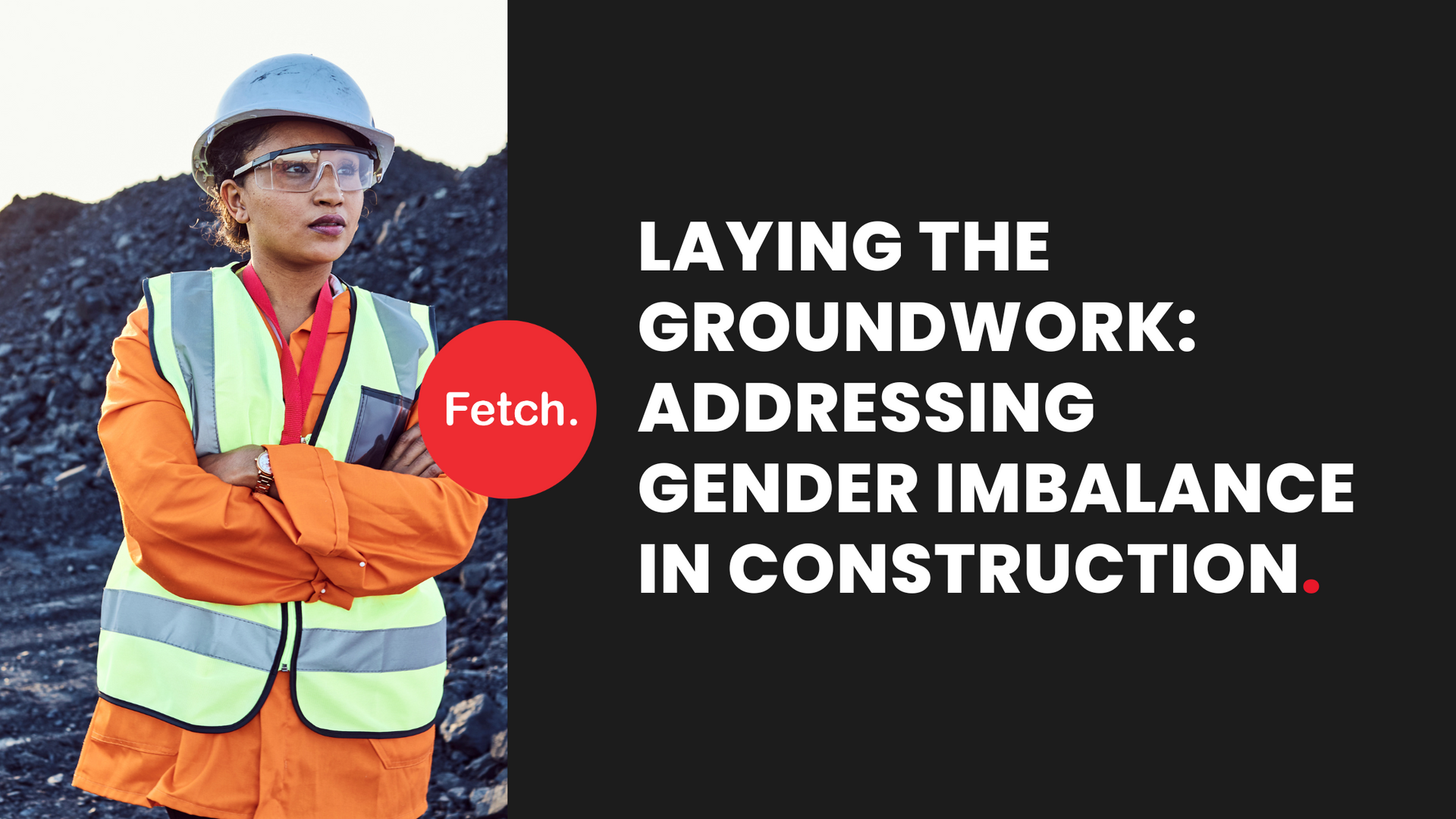
Share This Article
In the bustling and ever-changing world of construction, where towering skyscrapers reach into the sky and intricate infrastructures shape cityscapes, there lies a persistent challenge: gender imbalance. Despite significant strides towards gender equality in various industries, construction remains heavily skewed towards male representation. This inequity not only deprives the industry of diverse perspectives and varied approaches but also limits opportunities for women seeking rewarding careers in construction.
International Women's Day (IWD) presents an ideal time to reflect on the complexities of achieving gender equality in the construction industry, and to focus on what can be done to change the status quo. In this blog, we delve into the factors contributing to this gender gap and explore potential solutions for supporting inclusivity within the construction sector.
Understanding the Disparity
The gender disparity in construction is multifaceted, stemming from deep-rooted societal norms and industry-specific challenges. Historically perceived as a male-dominated field, construction has struggled to shed its image as a rugged, physically demanding and ‘blokey’ domain. This perception often dissuades women from pursuing careers in construction, leading to a glaring underrepresentation of female professionals.
Furthermore, systemic barriers such as gender bias, discriminatory hiring practices, and a lack of support networks further widens the gender gap. Women entering the construction workforce often face stereotypes, scepticism, and limited advancement opportunities, hindering their professional growth and retention within the industry.
This has caused the share of women in the construction to remain shockingly low, in Australia only 12% of the workforce identify as female and less than 2% of on-site roles are occupied by women.
Breaking Barriers and Promoting Inclusivity
Addressing gender imbalance in construction requires a concerted effort from various stakeholders, including employers, policymakers, educators, and industry associations. Here are several strategies to promote inclusivity and empower women in construction:
1. Education and Outreach: Initiatives aimed at attracting young women to STEM (Science, Technology, Engineering, and Mathematics) fields, including construction-related disciplines, can help dismantle gender stereotypes from an early age. Educational institutions and vocational training programs should actively encourage female participation in construction-related courses and apprenticeships. In Victoria, the local government
2. Diversity and Inclusion Policies: Companies within the construction sector must prioritise diversity and inclusion initiatives. Implementing gender-neutral recruitment processes, offering mentorship programs for women, and establishing supportive work environments are crucial steps towards fostering inclusivity.
3. Promoting Female Leadership: Elevating women into leadership positions not only serves as a powerful representation but also promotes a more inclusive corporate culture. Companies should actively identify and develop female talent, providing them with opportunities for advancement and leadership roles within the organisation.
4. Flexible Work Arrangements: Recognising the diverse needs of employees, including working mothers and caregivers, offering flexible work arrangements can enhance retention rates among female employees. Flexible scheduling, remote work options, and supportive policies for parental leave contribute to a more inclusive workplace culture.
5. Industry Collaboration and Advocacy: Collaboration among industry stakeholders, professional associations, and advocacy groups is essential for driving systemic change. By advocating for gender equality, sharing best practices, and supporting initiatives that promote women's participation in construction, the industry can collectively work towards closing the gender gap.
The Road Forward
While the construction industry may have a long way to go in achieving gender equality, there are shining examples of companies and initiatives that are actively working to change the status quo. Women Building Australia aims to attract and support women to succeed in the building and construction industry. They advance females in these in these spaces via mentoring, business coaching and promoting women owned/operated businesses.
The Victorian Government’s Women in Construction strategy aims to achieve a great representation of females in the industry. More women are active in the Victorian labour market now than in the past, but they make up only 2% of the workers in Australian construction. The Victorian Government are therefore making active changes and putting initiatives in place to ensure women can become fully qualified well-paid tradespeople.
The Victorian Government has introduced quotas for female participation on government construction projects. Their Building Equality Policy(BEP) requires that women make up:
- 3% of each trade role
- 7% of each non-trade position
- 35% of management, supervisor, and specialist labour roles.
In addition, 4% of labour hours for apprenticeships and trainees must also be performed by women.
The Western Australia Government announced initiatives to create safer and more inclusive workplaces for women.
· McGowan Government investing $3 million to establish new TAFE scholarships program for women in trade and technical occupations
· New Women's Workplace Safety Hub launched to help create safe and inclusive workplaces for women across all industries
· 50% of public service Senior Executive Service contracts now held by women
Achieving gender parity in construction is not merely a matter of social justice; it is also imperative for improving productivity, driving innovation, and ensuring long-term sustainability of the industry. By dismantling barriers, promoting inclusivity, and embracing diversity, the construction sector can unlock the full potential of its workforce and thrive in an increasingly competitive global landscape.
As we look to the future, let us embark on a journey towards a more equitable and inclusive construction industry—one where individuals of all genders are empowered to contribute, innovate, and build a brighter tomorrow, brick by brick. Together we can forge women's equality. Collectively we can all #InspireInclusion this IWD.


